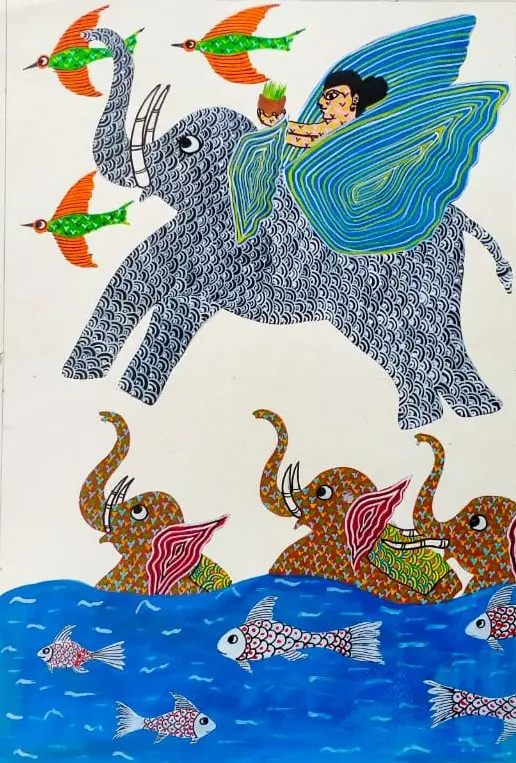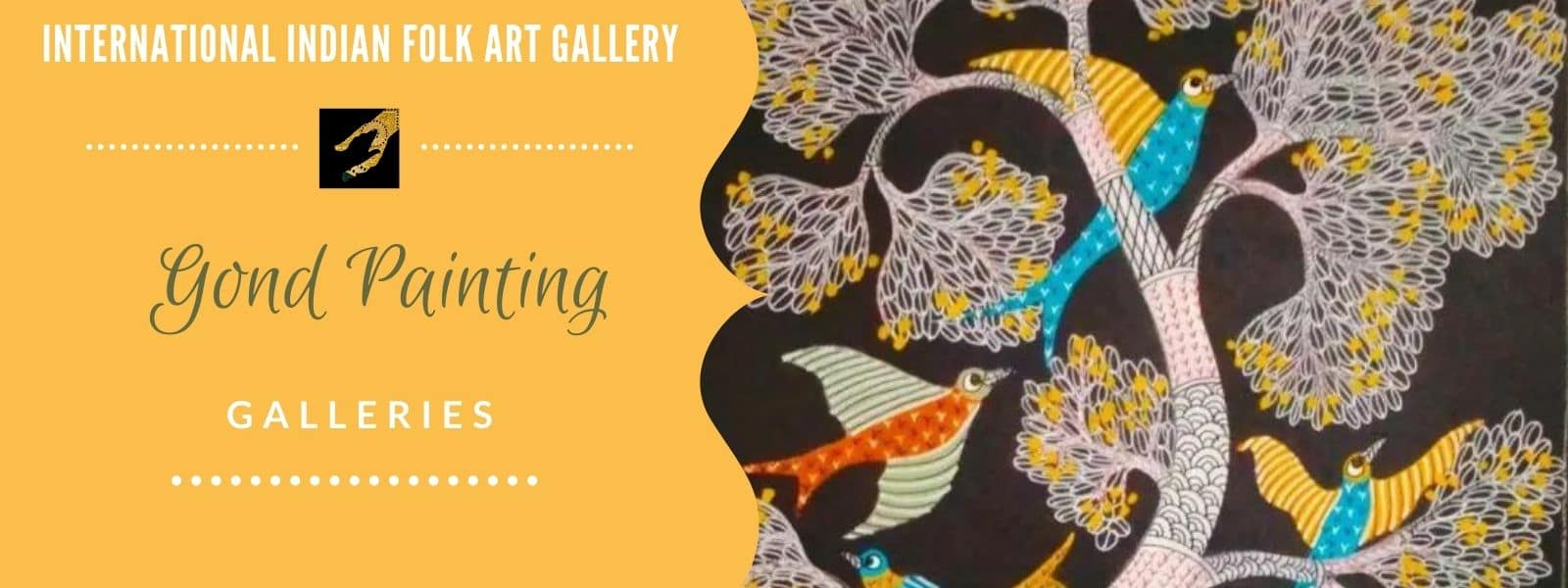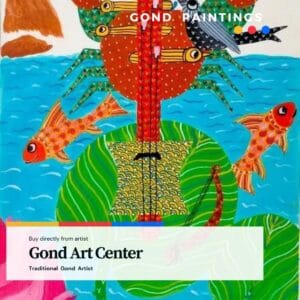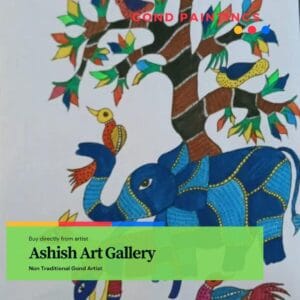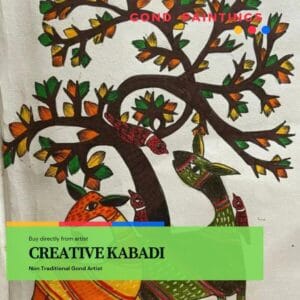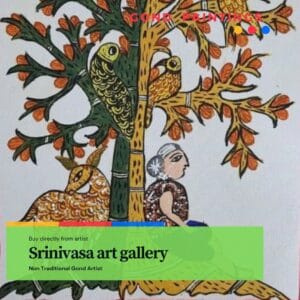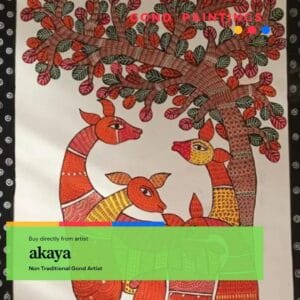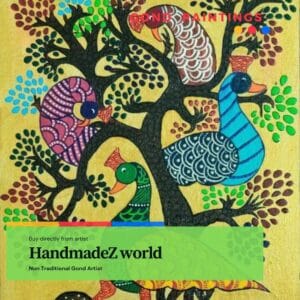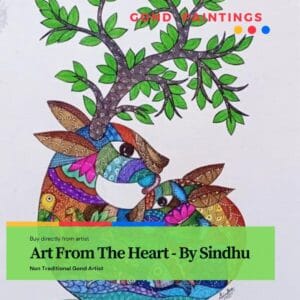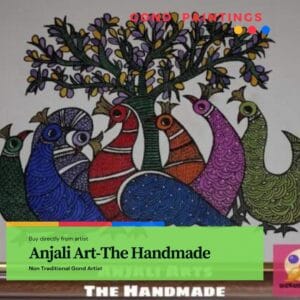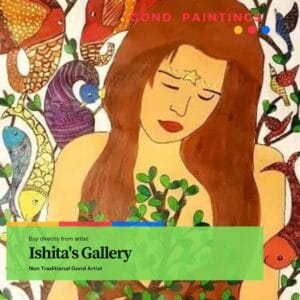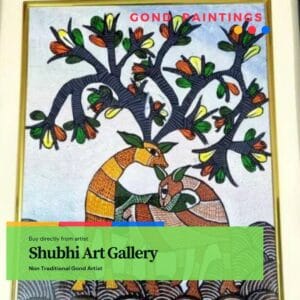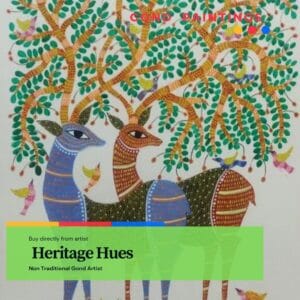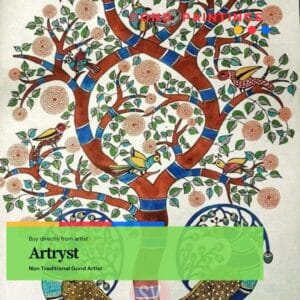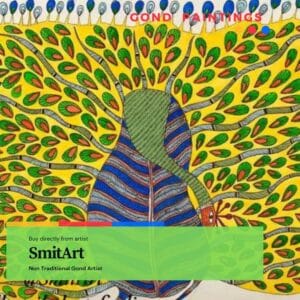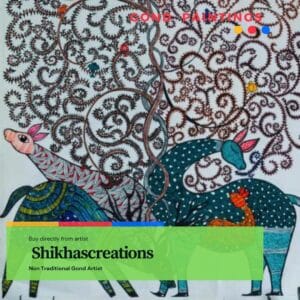Gond Painting
Gond painting has been practiced by the Gond tribe of Madhya Pradesh, India. Generally painted with dots and dashes or short lines, their illustrations feature complex patterns.
A type of Mural painting, done beautifully on the walls and floors as part of festival celebrations. Primarily using natural pigments for colors from vegetables, flowers, cow dung or mud etc
Gondi culture is the main background for the designs and patterns selected. Gondi is an Indian tribe that lives in the regions of Madhya Pradesh, Assam, and Andhra Pradesh. The unique feature of Gond painting is the fusion of living creatures with nature, they all seem connected.
The history of Gond painting is not complete without mentioning young Gond Tribal Artist Jangrah Singh Shyam, who transformed these mural paintings to canvas and paper in 1981 and tragically passed away in Japan under mysterious circumstances at the age of 39, promoting Gond Art in Japan.
His style of Gond painting on paper and canvas is also widely known as Jangarh Kalam. Gond tribal artist Jangrah Singh Shyam, is a master of the Gond tradition. He creates contemporary art with natural materials such as bamboo and leaves. His work is on display in galleries and museums around the world including the Smithsonian Museum of Natural History in Washington D.C., and London’s Victoria and Albert Museum.
The subject of Gond Art is predominantly natural, with animals, trees and birds. The designs and patterns selected are based on Gondi culture.
